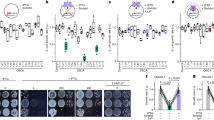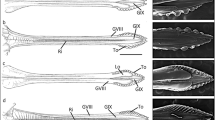Abstract
IT has long been recognized that the ability of cells to resist heat, cold, and desiccation is somehow related to the degree of hydration of the protoplasm. Active protoplasm in normal vegetative cells is usually composed of about 90 per cent water by weight1. Specialized reproductive structures such as spores and seeds, which show increased hardiness in regard to heat or desiccation, may consist of only 5–10 per cent water by weight2. It is important, however, to consider not only the total water content of biological material but also the water activity. Water molecules which are attracted and held by ions, polar molecules and hydrophilic colloids are spoken of collec tively as bound water. This water, which will not freeze regardless of how low the temperature is taken, shows greatly reduced activity and is generally assumed to be incapable of acting as a solvent3. There is no clear-cut distinction between such bound water and free water; one can only differentiate them by definition or by reference to results of specific analytical procedures. This bound water is considered by some investigators to be important in the spatial configuration of macromolecules and, during dehydrating conditions, to protect the cellular proteins from denaturation4,5.
This is a preview of subscription content, access via your institution
Access options
Subscribe to this journal
Receive 51 print issues and online access
$199.00 per year
only $3.90 per issue
Buy this article
- Purchase on Springer Link
- Instant access to full article PDF
Prices may be subject to local taxes which are calculated during checkout
Similar content being viewed by others
References
Stocking, C. R., Ency. Plant Physiol., 3, 15 (1956).
Kramer, P. J., Ency. Plant Physiol., 1, 194 (1955).
Kramer, P. J., Ency. Plant Physiol., 1, 223 (1955).
Crafts, A. S., Currier, H. B., and Stocking, C. R., Water in the Physiology of Plants (Chronica Botanica Co., 1949).
Levitt, J., Ency. Plant Physiol., 2, 584 (1956).
Meryman, H. T., Ann. N.Y. Acad. Sci., 85, 729 (1960).
Greaves, R. I. N., Ann. N.Y. Acad. Sci., 85, 723 (1960).
Author information
Authors and Affiliations
Rights and permissions
About this article
Cite this article
HOLM-HANSEN, O. Effect of Varying Residual Moisture Content on the Viability of Lyophilized Algae. Nature 198, 1014–1015 (1963). https://doi.org/10.1038/1981014a0
Issue Date:
DOI: https://doi.org/10.1038/1981014a0
This article is cited by
-
Factors affecting spore germination in algae — review
Folia Microbiologica (2009)
-
Blaualgenliteratur aus den Jahren 1967 und 1968 mit Ergänzungen aus den Jahren 1960 bis 1966
Schweizerische Zeitschrift für Hydrologie (1969)
Comments
By submitting a comment you agree to abide by our Terms and Community Guidelines. If you find something abusive or that does not comply with our terms or guidelines please flag it as inappropriate.



